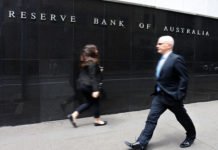China’s news agency Xinhua yesterday reported that the Central Committee of the Communist Party has made a proposal to change the Constitution and remove the phrase that says the President can sit for only two terms (each of five years). This paves the way for Xi Jinping to be able to stay as President when his current term expires in 2023. With Xi Jinping most likely to stay in power for another 10 years – and possibly more, it should secure the current Chinese economic reform path for a long time. We expect economic policy to continue focusing on the upgrading of China into the areas of technology and innovation, opening the economy up further alongside reducing poverty, fighting financial risks and reducing pollution. The Chinese markets responded positively to the news.
Next step is a formal approval by the NPC
In our view, the Chinese legislative session the National People’s Congress, which opens next week, is likely to approve the Central Committee’s proposal. With approval, there would no longer be a limit to how long a President could sit and Xi Jinping could, in principle, sit for life if he has support from the Communist Party.
Xi Jinping to be longest sitting leader since Deng Xiaoping
It has been clear for some time that Xi Jinping is the strongest leader since Mao. Xi Jinping was lifted to ‘core leader’ of the Communist Party in 2016, something his predecessor Hu Jintao did not achieve, and his name was written into the Constitution as the first sitting leader since Mao. Deng Xiaoping’s name is also in the Constitution but got there after his death.
Now we also know why there was no designated successor in the new Standing Committee of the Communist Party when it was presented in October 2017. The Party had probably already decided back then that Xi Jinping could stay on as President for longer than the two terms, although it needed a change to the Constitution. Xi Jinping will thus be the longest serving leader since Deng Xiaoping, who was China’s ‘paramount leader’ for around 15 years from 1978 until the early 1990s. Although he stopped having any formal leadership roles in 1989, he was China’s de facto leader until Jiang Zemin became President in 1993.
Xi Jinping a powerful leader but necessary to fight vested interests that block reforms
There is no doubt that Xi Jinping has amassed power during his first five years as President and driven a centralisation move. The Party has strengthened its’ role and tightened controls. However, it has to be seen in the light of the country Xi Jinping took over in 2013. While economic growth had been high for many years, extensive corruption and crony capitalism was widespread in many spheres of the economy as well documented in the book China’s Crony Capitalism by Minxin Pei. For China to get to the next stage of development and not get caught in the so-called ‘middle-income trap’, it had to deal with this problem. Many countries have become stuck in the ‘middle income trap’ because the existing leaders did not deal with – or were part of – the crony capitalism that is normal at the middleincome stage of development.
Vested interests block reform and efficiency gains because the people gaining from crony capitalism would lose out due to reforms and a fight against corruption. China’s leader from 2003-12 Hu Jintao was generally seen as a weak leader and he failed to deal with the significant growth in corruption that occurred under his watch.
China has a proverb that says ‘the mountains are high and the emperor is far away’, illustrating the problems for China’s leadership in getting local regions to follow orders. The proverb is said to be centuries old, illustrating that this is not a new challenge. The often popular belief that everyone follows orders from the top of the Party has been quite far from the truth. Collusion between local governments, local state-owned banks and local state-owned enterprises (SOEs) has been a widespread problem and also a factor behind the bad debts that have piled up in China.
For Xi Jinping, the fight against corruption was also a matter of securing the legitimacy of the Communist Party among a population where corruption is very unpopular. He has spoken extensively in many speeches about how to secure the legitimacy among the Chinese people. In combination with high inflation, anger over corruption was the main culprit behind the big protests at Tiananmen Square in 1989.
Xi Jinping set to secure the reform path and push for efficiency
While China has broadly managed to stay on a reform path throughout the 40-year period since the reform and opening policy began in 1978, Chinese leaders have been constantly challenged by a more conservative left-wing faction of the Communist Party. Following the crisis in 1989, conservatives in the Communist Party argued it happened due to the reforms. However, following a three-year reform vacuum, Deng Xiaoping gave a clear signal of continued reform with his ‘southern tour’ in 1992, when he visited the export areas of Shenzen, Guanzhou and Zhuhai. After that, foreign investment started to pour in again and the way was paved for the biggest push of economic reforms in China’s history under Zhu Rongji, who was China’s strong economic tsar of the 1990s (became premier 1998-2003). Interestingly, this was also a period of strong centralisation. Under President Hu Jintao (2003- 2013) the reform pace slowed down and the rapid growth during his period was due partly to the reforms done in the late 1990s and the entry into WTO in 2001 engineered by Zhu Rongji.
Although reforms in China have happened in ebbs and flows, we believe Xi Jinping is likely to be a guarantor of a continued steady reform path for many years to come. Xi Jinping launched a very ambitious reform agenda at the 3rd Plenum in 2013 and in 2015 he pushed for a deepening of supply-side reforms by reducing overcapacity, improving the efficiency of SOEs, closing zombie companies and fostering public-private partnerships. As already mentioned, the significant hindrance to making local SOEs more efficient is vested interests. However, it is becoming increasingly difficult for the local regions not to ‘follow orders’ from Beijing. Refraining from taking the necessary reform steps and fighting financial risks is likely to have bigger consequences for local leaders in the future.
The balance of not becoming too powerful
While the power of Xi Jinping is probably good for fighting vested interests, there is a delicate balance of not becoming too powerful and intervening in too many things. There is no doubt that companies are under closer scrutiny these days, causing some concern that this will inhibit the innovation and entrepreneurship for which China aims. China’s government has stepped in when it has deemed the activities of private companies unhealthy for the Chinese economy. The most recent case was last week when China took over control of the insurance company Anbang Insurance Group and prosecuted the former Chairman Wu Xiaohui for alleged ‘economic crimes’.
The China Insurance Regulatory Commission (CIRC) said on its website that it aimed to protect consumer interests, as the company’s unlawful practices may endanger Anbang’s solvency. In 2017, China also implemented measures to limit and restrict what it calls extensive overseas investments. The State Council released guidelines for foreign investments ‘to promote healthy growth of overseas investments and prevent risks’. It put restrictions on foreign investments in real estate, hotels, entertainment, sport clubs and outdated industries. China promotes what it sees as ‘patriotic’ investments but not investments that do not benefit the overall Chinese economy but instead could put it at risk.
The surveillance of activities and uncertainty over potential government intervention has created some anxiety in business circles, which works against the aim of fostering an entrepreneurial spirit. China thus has to tread carefully here and strike the right balance. The ‘new era’ is a Xi Jinping era
To sum up, it is now clear that ‘Socialism with Chinese Characteristics in a New Era’ is set to be an era with Xi Jinping at the helm for a long time. We believe it will be an era with continued tight control but also a strong hand in fighting vested interests and reinforcing that the Chinese economy can continue on a path of economic reform and take the next step on its development path. At the top of the current political agenda is what China has called the ‘three tough battles’, which are fighting financial risks, reducing pollution and eradicating poverty. Supply-side reforms and investment in technology are also high on the agenda.
If China manages to stay on this path of reform, the size of the Chinese economy is likely to double over the next 10-15 years and become the world’s biggest economy. A constant challenge for China will be to navigate on the global scene with a world that has become increasingly anxious as China grows in size. Not least, dealing with the US response to China’s growing role will be an important part of China’s foreign policy. It seems Xi Jinping is well aware of this as reports suggest Xi will give Wang Qishan, his most trusted ally, an important role in foreign affairs. Wang stepped down from the Standing Committee of the Politbureau in October, as he fell foul of the informal age limit rule as he was older than 67 years (see South China Morning Post: Will China’s new foreign policy dream team be the key to achieving its global ambitions?, 25 January). Wang is one of the most respected Chinese politicians and dealt with the US a lot when he was Governor of China Construction Bank in the 1990s and later when he was in charge of the Chinese side of the US-China Strategic and Economic Dialogue.













